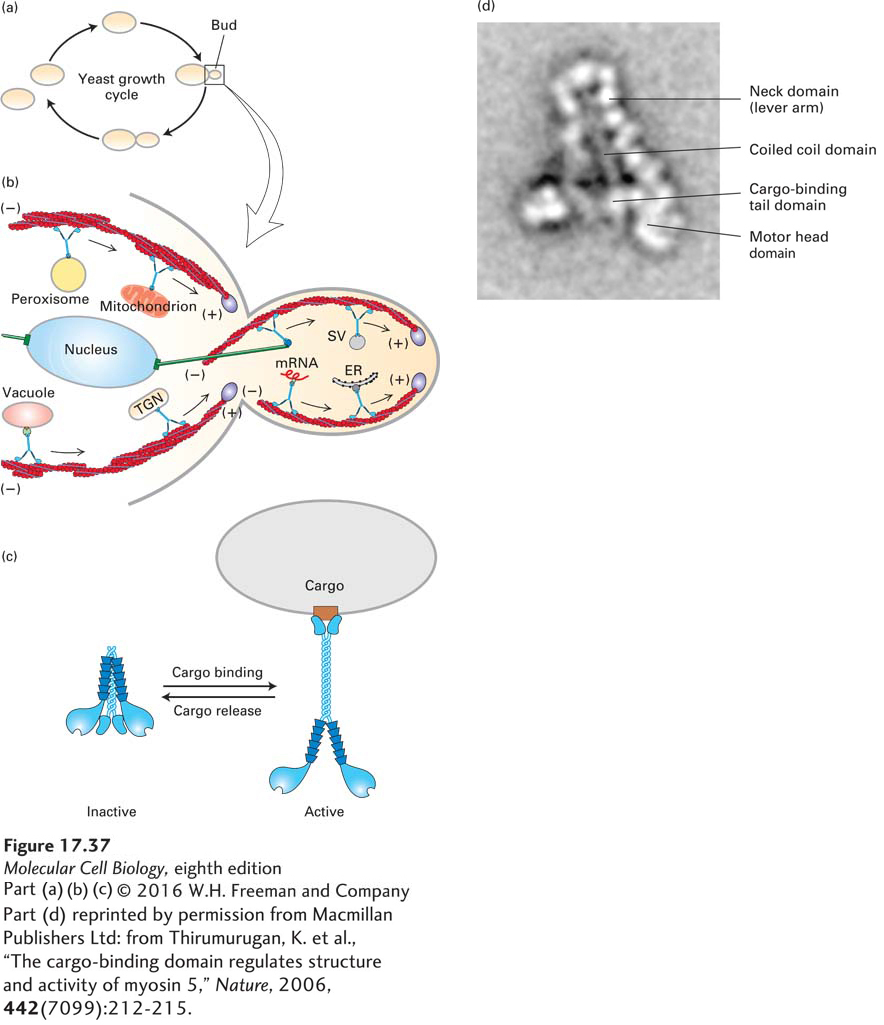
FIGURE 17- 37 Cargo movement by myosin V. (a) The yeast Saccharomyces cerevisiae (used in making bread, beer, and wine) grows by budding. Secretory vesicles are transported into the bud, which swells to about the size of the mother cell. Before cell division can occur, all the organelles must be segregated between the mother and the bud. The cell then undergoes cytokinesis to form two daughter cells. As shown in (b), all these transport processes depend on myosin V. This diagram of a medium- sized bud shows how myosin V transports secretory vesicles (SV) down actin cables nucleated by formins (purple) located at the bud tip and bud neck. Myosin V is also used to segregate organelles such as the vacuole (the yeast equivalent of a lysosome), peroxisomes, mitochondria, endoplasmic reticulum (ER), trans-Golgi network (TGN), and even selected mRNAs into the bud. Myosin V also binds the ends of cytoplasmic microtubules (green) to orient the nucleus in preparation for mitosis. See D. Pruyne et al., 2004, Ann. Rev. Cell Dev. Biol. 20:559. (c) Myosin V is regulated by binding cargo. In the inactive folded state, the tails of myosin V bind and inactivate the motor head domains. Upon cargo binding, the head- to- tail interaction is alleviated, and the motor is now active to transport cargo. (d) Electron micrograph of inactive myosin V. Myosin V molecules were negatively stained and viewed in a transmission electron microscope. The image shown is the composite average from several individual images.
[Part (d) reprinted by permission from Macmillan Publishers Ltd: from Thirumurugan, K. et al., “The cargo- binding domain regulates structure and activity of myosin 5,” Nature, 2006, 442(7099):212- 215.]
[Leave] [Close]